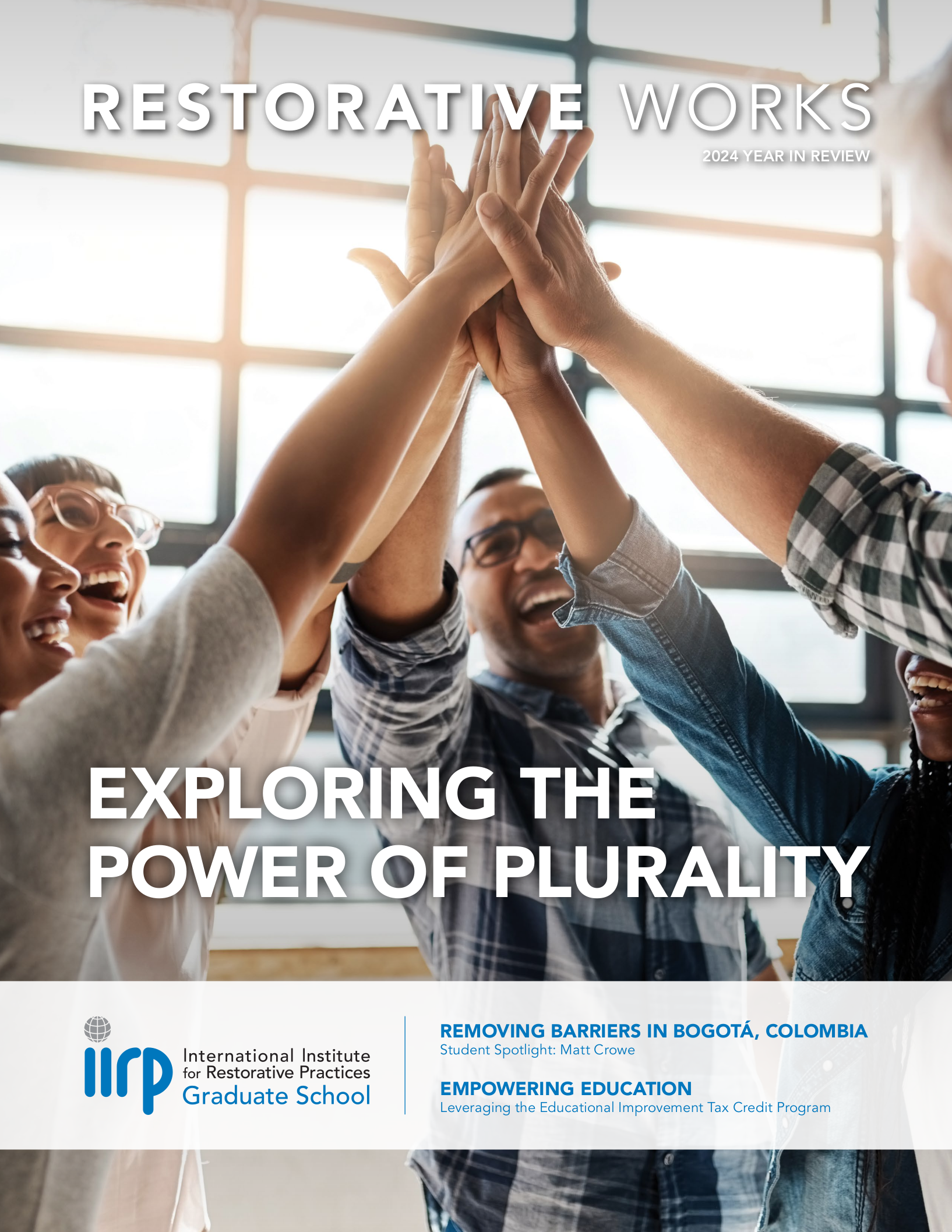News & Announcements
- Details
- Written by Laura Mirsky
Each year, Children’s Aid serves 150,000 children and families at locations throughout the city, providing services ranging from job training and academic support to health care and family counseling. Bermudez heads the agency’s Lasting Investments in Neighborhood Connections (LINC) program, which helps formerly incarcerated youth transition back to their community. She also supervises the Next Generation Center in the South Bronx, a LINC site that provides recreational and educational programs — and a haven in a neighborhood plagued by poverty and violence.
LINC clients are mostly 14- to 17-year-old lower-income black or Latino males with what Bermudez calls a “fragmented education history” and low literacy levels. Their offenses vary; many have been incarcerated for misdemeanors such as vandalism.
- Details
- Written by IIRP
On October 21-23, 2009, nearly three hundred educators, social service,criminal justice and other professionals from 15 countries and 18 U.S.states gathered in Bethlehem, Pennsylvania, USA, for the 12th IIRPWorld Conference, "Restoring Community in a Disconnected World, Part2." Like all IIRP conferences, the event was acclaimed by attendees asa wonderful opportunity to support each other’s efforts and sharesuccess stories and questions around restorative practices
- Details
- Written by Frank Früchtel, Guy Burns
Paper by Frank Früchtel, presented in a plenary session at "Restoring Community in a Disconnected World Part 2," the IIRP''s 12th International Institute for Restorative Practices World Conference, October 21-23, 2008, Bethlehem, PA, USA.
- Details
- Written by Wilma Derksen
Paper by Wilma Derksen, presented in a plenary session at "Restoring Community in a Disconnected World Part 2," the IIRP''s 12th International Institute for Restorative Practices World Conference, October 21-23, 2008, Bethlehem, PA, USA.
- Details
- Written by Estelle Macdonald
Paper by Estelle MacDonald, presented in a plenary session at "Restoring Community in a Disconnected World Part 2," the IIRP''s 12th International Institute for Restorative Practices World Conference, October 21-23, 2008, Bethlehem, PA, USA.
- Details
- Written by Howard Zehr
Paper by Howard Zehr, presented in a plenary session at "Restoring Community in a Disconnected World Part 2," the IIRP''s 12th International Institute for Restorative Practices World Conference, October 21-23, 2008, Bethlehem, PA, USA.
- Details
- Written by Jennifer Llewellyn
Paper by Jennifer Llewellyn, presented in a plenary session at "Restoring Community in a Disconnected World Part 2," the IIRP''s 12th International Institute for Restorative Practices World Conference, October 21-23, 2008, Bethlehem, PA, USA.
- Details
- Written by Kate Shapero
 Kate Shapero, in front of the IIRP Graduate School, Bethlehem, Pa., campus
Kate Shapero, in front of the IIRP Graduate School, Bethlehem, Pa., campus
Kate Shapero is pursuing her Master of Restorative Practices and Education at the IIRP Graduate School. She is a facilitator at the Penn Literacy Network at the University of Pennsylvania Graduate School of Education and is a curriculum consultant and substitute teacher (formerly a full-time science teacher) at Project Learn School, in Philadelphia, Pennsylvania, USA. The following are her reflections on the restorative conference facilitator’s script, written for IIRP Graduate School Course YC/ED 502: Basic Restorative Processes—Restorative Conferencing.
In mathematics and science, the term elegant is used to describe a formula or explanation that is both simple and comprehensive. Elegant ideas use evidence to braid together many of the messy strings dangling from a problem. They reveal core mechanisms and are easily related between individuals. Though it inhabits a world seemingly separate from the rigid logic of science and math, restorative conferencing is extremely elegant. The organization of conferencing approaches emotionally chaotic situations and provides structured opportunities to create solutions.
- Details
- Written by Laura Mirsky
Family group decision making (FGDM), known in New Zealand, the UK and Europe as family group conferencing or FGC, is proving to be a beneficial restorative practice to help reintegrate prison inmates back into society. This article addresses restorative FGDM/FGC programs in prisons in Adams County, Pennsylvania, USA, and in Hungary.
Beginning in New Zealand in 1989 in the youth justice and child welfare systems, FGDM/FGC operates according to the premise that the direct involvement of a family group works better to solve a family’s issues than the efforts of professionals alone to solve those issues for people. A key ingredient of an FGDM meeting is “Family Alone Time,” when the family group is left alone, without professionals in the room, to devise plans to solve their own issues. These plans are then evaluated by professionals for legal and safety concerns.
- Details
- Written by IIRP
This paper by Lorenn Walker and Leslie A. Hayashi covers facilitatedrestorative justice processes, combined with solution-focused brieftherapy, with subjects who plead guilty to crimes ranging fromharassment to negligent homicide. Program results were highly positivein terms of both participant satisfaction and recidivism.

Restorative Works Year in Review 2024 (PDF)
All our donors are acknowledged annually in Restorative Works.
